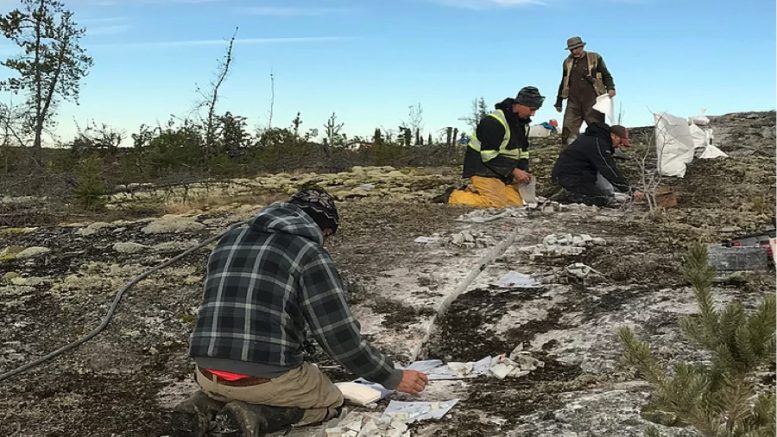With the aim to supply raw materials for about half a million electric vehicles annually by 2025, Frontier Lithium (TSXV: FL; US-OTC: LITOF) has stepped up its pace by quadrupling indicated resources at its Spark deposit in northwestern Ontario.
Spark now hosts 14.4 million tonnes grading 1.40%, up from the previously estimated 3.3 million tonnes grading 1.59%, after the company conducted two drill programs last year covering 3,269 meters.
Located about 175 km north of Red Lake, in an emerging lithium mineral district in the Canadian Shield dubbed the “Electric Avenue,” the Spark deposit is part of the company’s flagship PAK lithium project, which also includes the PAK deposit. The two deposits are located about 2 km away from each other and early studies outline two open pits at the deposits for the future mine.
According to David Ewing, Frontier’s vice-president of Sustainability and External Affairs, Spark’s latest update, which also adds new inferred resources of 18.1 million tonnes grading 1.37% lithium oxide, “increases the magnitude” of the PAK project.
“It shows battery producers, governments, communities and other stakeholders that we have the resources to back the project and the production,” Ewing told The Northern Miner in an interview. “The resource is now the highest grade and second largest in North America.”

The location map of Frontier Lithium’s PAK lithium deposit in northwestern Ontario. Credit: Frontier Lithium.
Lithium’s rising global demand due to the world’s decarbonization goals has compelled lithium-producing firms to expand their assets. Frontier’s PAK property is one of the more advanced lithium projects in Canada and received $363,000 in funding from the Ontario government last May to help the company demonstrate its lithium extraction process through a pilot project.
Five months later, the company said that the pilot produced battery-quality lithium hydroxide monohydrate from the PAK deposit.
But analysts warn that the increasing need for lithium could also contribute to greenhouse gas emissions in the future. BMO, in a report published in January, assessed six lithium-producing companies in its coverage and said emission levels from lithium producers would rise in the coming years as companies keep adding to their production capacity.
The report says that lithium through spodumene conversion produces higher emissions than brine-based operations and that about 60% of lithium capacity additions this decade would stem from spodumene conversion, such as the PAK project.
Ewing though expects the PAK project’s emissions record to be much better than other producers, due to its “unique position” of being situated near to battery manufacturers in the Electric Avenue, the deposit’s low stripping ratio and its access to Ontario’s “relatively carbon-free” electric grid.
“If you have a deposit 20 to 30 metres underground you have got to get to the deposit, strip away the waste rock in order to build an open pit. We don’t have that issue where we are,” said Ewing. “We are essentially sitting on a pegmatite at surface which is a real advantage as it requires less carbon to mine the ore body.”
The sustainability official further added that including Bart Meekis, a member of the Oji-Cree First nation of northwestern Ontario, to the firm’s board of directors last year helped boost relationships with the region’s communities.
“We have really benefitted from his perspectives and input since he has been on the board …this gives a sense of how seriously we think about achieving engagement,” Ewing said.
In February of 2021, Frontier released a preliminary economic assessment for PAK, forecasting a 26-year mine life with the potential to establish a hydrometallurgical chemical plant at an unidentified port in the Great Lakes.
At an 8% discount rate, the project would generate a post-tax net present value of US$974 million and an internal rate of return (IRR) of 21% using a base price of US$13,500 per tonne of lithium hydroxide. The study envisions an initial capital cost of US$685 million with a strip ratio of 3.6 to 1 and an average annual production of 23,174 tonnes of lithium hydroxide.
The company aims to complete its prefeasibility study this year.
At presstime in Toronto, Frontier Lithium was trading at $2.79 per share within a 52-week trading range of $3.05 and 69¢. The company has 207.9 million common shares outstanding for a market cap of $528.3 million.


Be the first to comment on "Frontier Lithium boosts spodumene resources ahead of prefeasibility study"